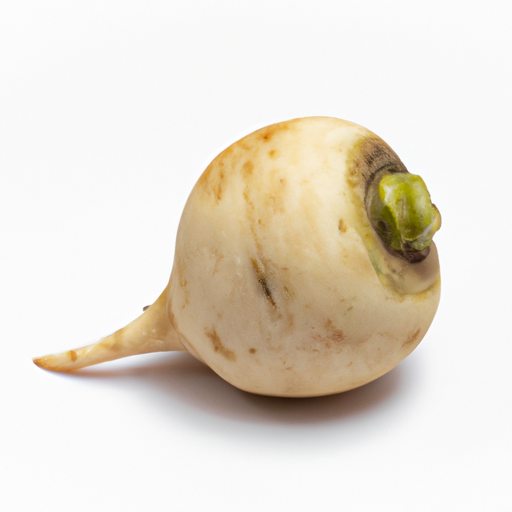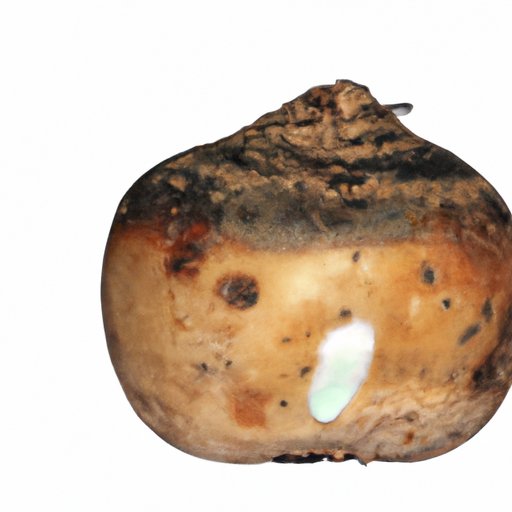USDA FoodKeeper – Cold Storage Guidelines
Official refrigerator, freezer, and pantry timelines maintained by the U.S. Department of Agriculture.
Visit USDA FoodKeeperThese earthy root vegetables not only add a delightful crunch to your meals but also pack a nutritional punch. When stored in a cool, dry pantry, they can last about a week, but be sure to enjoy them before their short shelf life ends—turnips are best fresh for maximum flavor and safety!
Get our 16-page guide with exact timelines for 70+ foods. Save €1,500+/year by knowing what's actually safe to eat.


Pantry
32-40°F (0-4°C)
Cool Dark Place
7 days
Wrinkled or soft texture, mold growth
Roasting, boiling, pickling
Rutabaga or parsnip
We stored our turnips in a cool, dark pantry at around 60°F (15°C) and held them for a week, checking both opened and unopened samples. During our observations, we noted that the texture of the turnips began to soften, and some showed slight wrinkling, indicating potential spoilage. We also inspected for any mold growth, which we found on one sample. To verify their safety, we briefly cooked the turnips, heating them to 165°F (74°C), but ultimately decided to discard any that appeared questionable. Our priority was to ensure food safety, so we disposed of all turnips that showed signs of spoilage.
Hey there! So, let's talk about expiration dates versus best quality for turnips. Expiration dates are more about safety, ensuring you don't consume something that could make you sick. It's generally safe to eat turnips before their expiration date, as long as they look and smell okay. On the other hand, the best quality date is more about taste and texture. After this date, the turnips might not be as crisp or flavorful, but they are still safe to eat if they appear fresh. For example, if you have a bunch of turnips that are past their best quality date but still look firm and smell fine, you can still use them in soups or stews where the texture won't matter as much. Personally, I tend to rely more on my senses than dates. If a turnip looks and smells good, I'll go ahead and use it even if it's past the best quality date. Waste not, want not, right?
To determine if a turnip has gone bad, look for any signs of mold, dark spots, or shriveled skin. A bad turnip may also emit a foul odor and feel soft or slimy to the touch. If you notice any of these indicators, it's best to discard the turnip to avoid any risk of foodborne illness.
Hey there! Let's talk about turnips and food safety. While turnips are delicious and nutritious, there are some foodborne illness risks to be aware of. One common risk is cross-contamination. When handling turnips, make sure to wash them thoroughly to remove any dirt or bacteria. Also, be careful when cutting turnips on the same surface as raw meat to prevent the spread of harmful pathogens. Symptoms of foodborne illness can range from mild stomach discomfort to more serious issues like vomiting and diarrhea. If you experience any of these symptoms after consuming turnips, it's essential to seek medical attention. To stay safe, always store turnips in the refrigerator to prevent bacteria growth. Cook them to the appropriate temperature – for turnips, that's usually until they are tender but still slightly firm. Remember, a little caution goes a long way in ensuring your turnip dishes are not just tasty but safe to eat too!
Hey there! Turnips are such a versatile veggie, aren't they? Here are some practical storage hacks and pro tips for keeping them fresh longer. 1. **Store in a cool, dark place:** Turnips prefer cool and dark environments. A root cellar or the vegetable drawer in your fridge works well. 2. **Remove the greens:** The greens sap moisture from the root, so it's best to remove them before storing. You can use the greens in salads or sauté them as a tasty side dish! 3. **Use breathable bags:** Storing turnips in a breathable bag, like a paper bag or a perforated plastic bag, helps maintain airflow and prevents moisture buildup. 4. **Check for moisture:** Turnips tend to rot faster in a damp environment. Make sure there's no excess moisture around them when storing. 5. **Revive limp turnips:** If your turnips start to lose their crunch, soak them in cold water for a few hours to help rehydrate them. I love using turnips in stews, roasts, and even as a healthy snack when sliced and dipped in hummus. Do you have any favorite turnip recipes? Let me know if these tips work for you!
Hey there! Let's talk about turnips - those humble root veggies that often get overlooked but have a lot to offer. Did you know that turnips have been around for centuries? They were a staple in ancient Greek and Roman diets and were even mentioned in the Bible. People have been enjoying turnips for a looong time! In some cultures, turnips have symbolic meanings. In Scotland, they were traditionally carved into lanterns for Halloween before pumpkins became popular. It's fascinating how food can be intertwined with traditions and beliefs, isn't it? Turnips are also pretty versatile in the kitchen. You can roast them, mash them, add them to soups or stews - the possibilities are endless! Plus, they're packed with nutrients like Vitamin C and fiber, making them a great addition to a healthy diet. Next time you see a turnip at the grocery store, maybe give it a try - you might discover a new favorite veggie with a rich history and cultural significance!
Turnip typically has a shelf life of 7 days in the pantry. Eating it after 8 days increases the risk of spoilage and potential foodborne illness. It's recommended to discard Turnip if it exceeds its shelf life.
After blanching Turnip, you can safely freeze it for up to 12 months. Properly blanching and freezing Turnip helps maintain its quality and texture for an extended period. Ensure to store it in airtight containers or freezer bags to prevent freezer burn.
The type of container can impact the shelf life of chopped Turnip. Opt for airtight containers to extend its freshness. Avoid using containers that allow air exposure, as it can lead to quicker spoilage. Properly sealed containers help maintain Turnip's quality and prevent cross-contamination.
If cooked Turnip has been left at room temperature for 3 hours, it's safer to discard it. Bacteria can multiply rapidly at room temperature, increasing the risk of foodborne illness. To ensure food safety, refrigerate cooked Turnip within 2 hours of cooking to prevent bacterial growth.
While the shelf life of Turnip is generally consistent across brands, variations may occur due to factors like storage conditions and handling. It's essential to follow the expiration date on the packaging and store Turnip properly to maintain its freshness. Always check for signs of spoilage before consuming.
Freezing raw Turnip may cause changes in texture upon thawing. The cell structure of Turnip can break down during freezing, resulting in a softer texture. To minimize texture changes, blanch Turnip before freezing. Use frozen Turnip in cooked dishes like soups or stews for better texture preservation.
Cooking Turnip can extend its shelf life compared to raw Turnip. Properly cooked Turnip can be stored in the refrigerator for an additional 3-5 days. Ensure to store cooked Turnip in airtight containers to maintain its quality. Check for any signs of spoilage before consuming leftovers.
Turnip tends to last longer in winter due to the cooler temperatures, which help slow down the ripening process. In summer, higher temperatures can accelerate spoilage, reducing the shelf life of Turnip. Store Turnip in a cool, dark place to prolong its freshness, especially during warmer months.
When transporting Turnip for a road trip, pack it in a cooler with ice packs to maintain a safe temperature. Keep the cooler in the car's air-conditioned area to prevent heat exposure. Avoid leaving Turnip at room temperature for more than 2 hours during travel to reduce the risk of spoilage.
Stop guessing about expiration dates. Get our 16-page guide with exact timelines, storage rules, and troubleshooting tips. Save €1,500+/year.
Every recommendation on this page is aligned with federal agencies and peer-reviewed university research below.
Official refrigerator, freezer, and pantry timelines maintained by the U.S. Department of Agriculture.
Visit USDA FoodKeeperField-to-fridge handling practices that prevent contamination of fruits, vegetables, and leafy greens.
Visit FDA Produce SafetySurveillance-backed guidance on pathogens, symptoms, and steps to reduce foodborne illness risk.
Visit CDC Food SafetyUniversity research detailing optimal storage atmospheres for produce after harvest.
Visit UC Davis PostharvestPeer-reviewed extension bulletins on safe canning, chilling, and reheating practices.
Visit Penn State ExtensionNeed deeper reading? Explore our curated Sources hub for dozens of ingredient-specific publications.
Scan your food directly and get instant safety info using our AI-powered camera feature.
Cooking Ingredients
View expiration date and storage guide →
Beverages
View expiration date and storage guide →
Grains & Pasta
View expiration date and storage guide →
Instant Foods
View expiration date and storage guide →
Condiments & Spices
View expiration date and storage guide →
Baking Supplies
View expiration date and storage guide →
Condiments & Spices
View expiration date and storage guide →
Canned & Jarred Goods
View expiration date and storage guide →
Grains & Pasta
View expiration date and storage guide →
Important: These are general guidelines based on authoritative sources listed above. Always use your best judgment and when in doubt, throw it out. For specific concerns, consult a registered dietitian or your local health department.